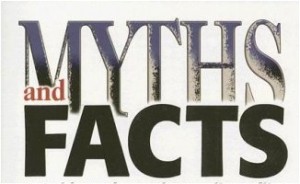Using Myths and Facts for Prevention
 There is a robust discussion about the value of using “Myths and Facts” for violence against women prevention in the Prevent-Connect Email Group. Clearly we want our audiences to have accurate information about sexual violence and domestic violence. But what is the best strategy to do that?
There is a robust discussion about the value of using “Myths and Facts” for violence against women prevention in the Prevent-Connect Email Group. Clearly we want our audiences to have accurate information about sexual violence and domestic violence. But what is the best strategy to do that?
When I look at surveys conducted by the Family Violence Prevention Fund and see changes in classroom presentations, I recognize that many of the myths from yesterday are not as strongly held as toady. With Rape Myth Acceptance scales, many practitioners find pre-test scores to be very high. I attribute this to the success of rape and domestic violence awareness and prevention efforts.
Frameworks Institute suggests that “order matters” – if we restate a myth many member of the audience may take that information as reinforcement of the myth. One study compared using a “Myth and Facts” sheet vs. a “Fact” sheet about flu vaccinations. The use of the Myths and Facts sheet led some people to believe the myths as facts. Another study suggested that warning people about false claims may actually reinforce the falsehood.
I asked about this question on a social marketing email group. One person shared how in a tobacco prevention effort did dispel myths such as “Tobacco is cool” but they did not restate the myth; instead the campaign provided an alternative message: “Tobacco is foul.” Another person described how they tested using a myth and fact approach for drug prevention and STI prevention efforts. In the testing they found that young people generally stop reading once they have read the myth acting as if they have just received confirmation or reinforcement of their existing beliefs/attitudes. Of course, these are not examples about violence against women.
How do we use these lessons in sexual violence and domestic violence prevention? Do classroom exercise that have students discuss why a myth is true actually serve to reinforce the myth? Personally, I like structuring prevention work so we catch people doing things right. Let’s set up our discussions and activities to promote the frame we want. There is a place to learn good critical analysis but that takes time and we need the appropriate environment.
What do you think?

For me, the traditional way of using myths on handouts and in short presentations feels exploitive – that they have this shock value that gets attention but put the emphasis on what we want to leave behind instead of the information we want people to leave with. I can see that in longer programs where we have more time and can be very intentional about how we use them, talking about myths, where they come from, how they are reinforced, and the reality behind them may have a place.
I think your last point should be highlighted – let’s structure prevention work so we “catch people doing things right.” Myths/facts may not be an issue if we use a promotion framework.
Here is an abstract for another article cautioning the use of “myth busting” in written materials:
Wilson, Elizabeth A. & Park, Denise C. A case for clarity in the writing of health statements. Patient Education and Counseling. Vol 72(2), Aug 2008, pp. 330-335
“While effectively written health-related materials can facilitate self-care, using negative wording may backfire, as patients may forget negations and remember the opposite of intended information. The present study attempts to determine if older readers are particularly susceptible to misremembering negatively worded health-related statements.
Methods: Younger and older adults read positively and negatively worded statements and were later tested for memory of the exact statements, statements opposite in meaning due to the addition or deletion of a negation, and entirely new statements.
Results: For intact statements, both groups recognized more positive than negative statements. When statements reversed meanings, younger adults were more likely to accurately recognize items that changed from negative to positive than were older adults, who were more likely to incorrectly endorse changed items as intact when items began negative and became positive than the reverse.
Conclusion: The inclusion of negations, often used in attention-grabbing techniques such as myth-busting, can backfire, especially among older audiences who are less likely to accurately remember negatively worded items and especially likely to endorse their positive counterparts.
Practice Implications: Designers of healthcare materials should avoid using negatively worded statements, which may be misremembered by vulnerable populations, in favor of positive wording.”
( (c) 2009 APA, all rights reserved)
I think that the use of myths and facts as prevention is one of the big myths about prevention. Most people know that if you are trying to teach someone how to spell, the last thing you want to do is spell it wrong on the blackboard. If we’re really about prevention, I agree, let’s reinforce ideas, actions, attitudes, and social policy that builds a safer society.
Our agency stopped, long ago, using myths and facts in our work, particularly among students (middle school through college). We have found from written feedback that offering the facts is dramatic enough. Students invariably respond in writing how “blown away” they are on learning about domestic and dating violence statistics and “facts,” and rape and sexual assault “facts.” Why would we want to re-enforce the idea that rape is the woman’s fault because she was dressed provocatively? If this comes up, we answer it, but for many young people today, that idea sounds preposterous.